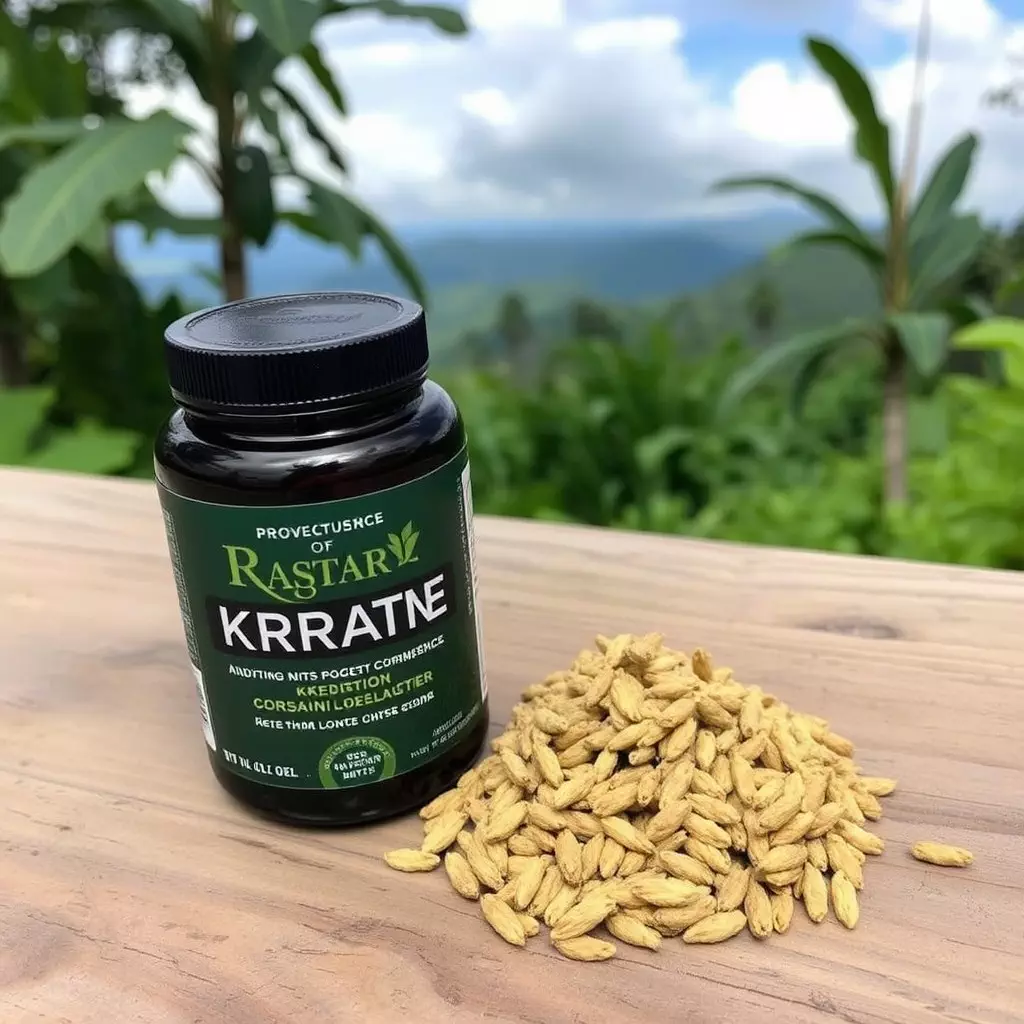Kratom, derived from a Southeast Asian tree, has been studied for its potential in managing chronic pain due to its alkaloids like mitragynine and 7-hydroxymitragynine, which mimic opioid effects. While it shows promise for alleviating a wide range of chronic pain from mild to severe, caution is advised due to the risk of interaction with other medications and potential for dependency. The integration of kratom with aromatherapy, particularly using 'diffuser thieves oil,' is explored as a holistic approach to enhance its analgesic properties. This combination is said to improve not just physical pain but also psychological well-being by creating a relaxing and stress-reducing environment. However, it's imperative to proceed with medical supervision and to follow safe usage practices, including starting with low doses, adhering to dosage guidelines, and ensuring the purity of the kratom sourced. The 'Thieves' blend, which includes ingredients like clove, lemon, cinnamon bark, rosemary, and eucalyptus, can be used in a diffuser alongside kratom; however, users must exercise caution to avoid over-stimulation or negative reactions, always adhering to the manufacturer's instructions. The synergistic effect of combining kratom with aromatherapy, especially 'Thieves,' may offer more effective pain relief than either treatment alone. It is crucial for individuals to consult healthcare professionals and regularly assess the combined effects for a personalized approach that ensures safety and aims for optimal pain management.
Chronic pain is a persistent challenge for countless individuals, often leading to a quest for effective management strategies. This article delves into the potential of kratom as an alternative approach in pain mitigation, exploring its role with a focus on integration with aromatherapy, particularly through the use of diffuser blends and Thieves Oil. We will examine how these complementary therapies can work synergistically to alleviate chronic discomfort. As we navigate the complexities of kratom’s benefits and safety measures, readers will gain valuable insights into managing chronic pain responsibly and effectively.
- Exploring Kratom's Role in Chronic Pain Management: An Overview
- Integrating Kratom with Aromatherapy: The Synergy of Diffuser Blends and Thieves Oil
- Safe Practices and Considerations when Managing Chronic Pain with Kratom and Aromatherapy
Exploring Kratom's Role in Chronic Pain Management: An Overview

Kratom, a tropical evergreen tree native to Southeast Asia, has garnered attention in discussions surrounding chronic pain management. The leaves of kratom contain compounds that can interact with the opioid receptors in the brain, offering analgesic effects that are beneficial for those suffering from persistent pain. Users often consume kratom in various forms, including capsules, teas, or powder, which can be mixed with liquids such as those used in diffusers. The alkaloids present in kratom, primarily mitragynine and 7-hydroxymitragynine, are credited with its pain-relieving properties. These substances are being explored for their potential to alleviate chronic pain, which can range from mild to severe and debilitating.
The use of kratom for pain management is a subject of ongoing research and debate. While some studies suggest that kratom may provide significant relief for individuals with chronic pain conditions, its efficacy and safety remain under scrutiny. It’s important to approach the integration of kratom into one’s pain management regimen with caution, as it can interact with other medications and has the potential for dependency and adverse effects. Users considering kratom should do so under the guidance of a healthcare provider, ensuring that their treatment plan is comprehensive and includes monitoring for both therapeutic benefits and any negative impacts on overall health. Additionally, the use of diffuser thieves oil, known for its aromatic properties and potential health benefits, may complement kratom’s effects in managing chronic pain, though this combination should also be approached with professional medical oversight.
Integrating Kratom with Aromatherapy: The Synergy of Diffuser Blends and Thieves Oil

Kratom, a plant native to Southeast Asia, has garnered attention for its potential in managing chronic pain. While kratom can be consumed in various forms, its integration with aromatherapy, particularly through the use of diffuser blends and Thieves Oil, presents a holistic approach to pain management. The synergy between kratom’s alkaloids, such as mitragynine and 7-hydroxymitragynine, and the therapeutic properties of essential oils found in Thieves Oil can create a soothing atmosphere conducive to pain relief. Diffuser blends infused with Thieves Oil, which contains clove, lemon, cinnamon bark, rosemary, and eucalyptus essential oils, complement kratom’s analgesic effects by promoting relaxation and reducing stress, both of which are often associated with chronic pain conditions. This combination not only aims to alleviate physical discomfort but also addresses the psychological aspects of living with persistent pain. Users reported a sense of well-being and improved mood when using these diffuser blends alongside kratom, suggesting that the integration of aromatherapy can enhance the overall therapeutic experience. It’s important for individuals to consult healthcare professionals before incorporating kratom or Thieves Oil into their pain management regimen, as both can have potent effects and potential interactions with other medications. The careful consideration of dosage and usage guidelines is crucial for safe and effective use in managing chronic pain.
Safe Practices and Considerations when Managing Chronic Pain with Kratom and Aromatherapy

When incorporating kratom into chronic pain management plans, it is imperative to adhere to safe practices and considerations to mitigate potential risks. Users should start with low doses to gauge their individual response and gradually increase if necessary. It is crucial to source kratom from reputable vendors to ensure purity and potency. Additionally, individuals must comply with local laws and regulations regarding the use of kratom, as its legality varies by region. Concurrently, aromatherapy, particularly essential oils like those found in a diffuser, can complement kratom’s therapeutic effects. Aromas such as eucalyptus, peppermint, or lavender from the ‘Thieves’ blend can promote relaxation and pain relief when diffused. To enhance this holistic approach, it is advisable to follow manufacturer instructions for using a diffuser and to never exceed recommended usage guidelines to avoid over-stimulation or adverse reactions.
Moreover, combining kratom with aromatherapy should be approached with caution, as both can affect central nervous system function. It is essential to monitor the combined effects closely and consult with a healthcare provider before integrating these practices into a chronic pain management routine. This collaboration between kratom and aromatherapy, particularly through products like diffuser blends, can offer a synergistic effect that may be more effective than either modality alone. Users should also be mindful of their overall health status, as certain conditions or medication interactions may necessitate adjustments to these treatment modalities. Regularly assessing the effectiveness and side effects is key to tailoring a personalized pain management strategy that balances relief with safety.
In conclusion, the exploration of kratom’s role in chronic pain management presents a promising alternative for those seeking relief. The integration of kratom with aromatherapy, particularly through the use of diffuser blends featuring Thieves Oil, offers a complementary approach that can enhance the efficacy of pain management strategies. It is imperative to approach such treatments with caution and adherence to safe practices. As highlighted throughout this article, careful consideration of dosage, frequency, and individual response to kratom, alongside aromatherapy methods, is crucial for optimal and safe outcomes. Prospective users are encouraged to consult healthcare professionals before integrating these therapies into their pain management plan. With the right guidance and responsible use, the combination of kratom and aromatherapy, especially with a diffuser like the Thieves Oil, may provide significant relief for those grappling with chronic pain.






